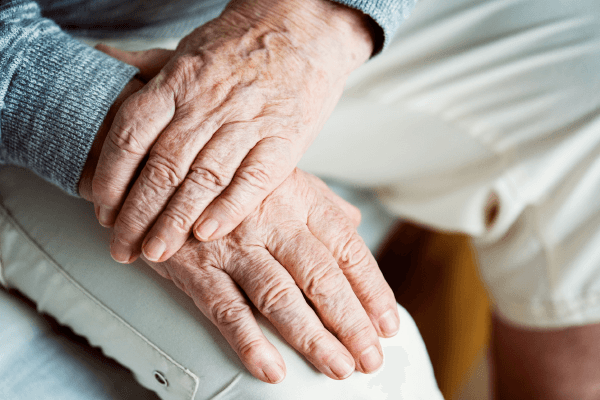According to an AARP survey, three out of four seniors aged 50 and older would rather live out their retirement years in their own homes. An even higher percentage expressed a desire to age within the same community if not in their own homes. Living at home has the potential to be very beneficial for seniors. Folks can stay connected with friends, neighbors and local activities, which helps to build a strong support network. Staying engaged in the community helps seniors combat depression, feel safer and personalize their surroundings. Additionally, there are often financial benefits to aging at home according to a study published in PLoS One.
While living at home is often the most desirable option for seniors, many factors can make it more difficult. Falls are the number one cause of injuries for the elderly. For those who live alone, a fall could result in extended wait times before notifying emergency services. For seniors who prefer to age in place, there are many tools, home modifications and behaviors that can be used to create a safe space that allows them to continue to enjoy their independence for as long as possible.
Tackling the Isolation Challenge
For seniors and their families, one of the big worries is isolation. Many seniors who choose to retire to an independent or assisted living facility do so for the extra opportunities to socialize. When aging at home, seniors, particularly those with limited mobility, may not have as many opportunities to stay engaged. Studies show that isolation and loneliness play a key role in personal health. Those who feel isolated and lonely are substantially more likely to face poor outcomes from heart disease and stroke. According to the Centers for Disease Control, social isolation increases the risk of premature death as much as major behavioral factors, such as smoking, obesity and physical inactivity.
New technology offers a convenient way to improve the situation by implementing regular check-ins. Some medical alert and home monitoring systems include direct communication options for designated friends and family members. Seniors can initiate a call with voice commands or at the push of a button, which makes it easier for them to stay in touch. These devices are often wearable, so they travel with seniors without the need to keep track of a purse or bag.
By creating a regular visitation schedule and building a calendar of events for a loved one to get out into the community, seniors can more safely remain in their homes. Paying attention to the calendar is important when caring for seniors even at a distance. A senior who is out of touch for an extended period can easily fall into isolation. By keeping up with their activities, facilitating transportation when needed and making regular visits, loved ones can be more proactive about a senior’s health as they age and more in tune with their changing needs.
Staying Fit and Active
While isolation is a major concern, physical activity is a close second. Too much activity means a higher risk of an injury or illness, while not enough can lead to deterioration, decreased muscle mass and a decline in mobility. Physical activity forms the foundation for all other types of health, including social, mental and emotional. Studies show that a regular fitness routine that follows the overload principle can help reduce the risk of dementia, heart disease, Type 2 diabetes and other non-communicable illnesses. In general, seniors should perform 150 minutes of intense physical activity each week for optimal benefits.
Physical activity is a crucial element for seniors seeking to age at home, but the house may not be the best place to perform vigorous exercise. Due to the increased risk of an injury or fall, it’s often best to find a place to exercise that’s always full of people in case help is needed. Finding a good balance between safety and movement is important when trying to keep seniors physically active.
Making the Home Safer
Around the house, a medical alert device is a great way to deliver peace of mind. Seniors who remain mobile may try to tackle tasks that are too demanding. With a medical alert device, if something goes wrong, help is available at the touch of a button. Fall detection may automatically alert emergency services when needed. Some devices even include general activity monitoring, so a remote caregiver is alerted if the senior is suddenly not moving as much or appears to be moving too much. These alerts are an invaluable tool for those who are concerned about a loved one who still has the capacity for fully independent living, particularly if this person is living alone.
Best Places for Senior Fitness Classes
Local senior centers are a great resource for fitness classes. Many of these locations offer modified exercise programs, such as chair yoga or tai chi, to help seniors stay in shape while also respecting their physical limits. In addition to fitness, senior centers also offer places to meet those who share similar hobbies or interests. From a local book club to a bird-watching group, seniors can find a wide array of activities on the calendar. Add in the possibility of a hot lunch, and a senior center becomes an excellent way for the elderly to stay physically and mentally active while connecting with others in their communities.
The YMCA also offers a variety of classes that can help. From water aerobics to volunteer opportunities, the Y is a great place for seniors to develop a social group or work out. Working with children, teaching classes and participating in fitness events like a 5K can all be helpful for seniors who need a little extra push to meet their exercise goals.
Have a Helping Hand Available
For a secure life at home, one of the most important elements to offer seniors is a helping hand. While they may not need assistance every day, unexpected changes in condition can leave a senior without the ability to handle the activities of daily living. A senior who is generally in good physical shape might experience a fall if they contract the flu or another viral infection. Upper respiratory illnesses can depress oxygen levels and lead to dizziness and a lack of balance. If a fall happens, the faster they receive help, the more likely they are to make a quick and complete recovery.
Medical Alert Devices
One key component to keeping aging loved ones safe in their home is a medical alert device. These wearable technologies maintain an always-on connection between your loved one and emergency services. If they get sick and can’t walk to the phone or have trouble with the fine motor control needed to operate a mobile phone, these devices allow verbal communication with a trained dispatcher who can contact 911.
Making the Home Safe
Home modification is another way to add some general safety around the house. For seniors who struggle on the stairs, an extra railing or a chair lift might be a way to make the home a place where they can continue to live safely. There are many other ways to modify a home to accommodate different levels of mobility, especially in the kitchen or bathroom.
Exploring In-Home Services
In the long term, seniors may start having difficulty with some activities of daily living. Standing at the kitchen stove to prepare a meal or getting into the bathtub alone might be too much for older adults with limited mobility. When seniors live with a younger relative who is on hand to help, these are often very manageable situations, but for seniors who live alone, it might be best to explore other options, such as hiring a home health aide or other in-home service.
Housekeeping and Chore Help
For seniors who can get around and take care of themselves but lack stamina or struggle with extended activities, a little bit of help around the house can go a long way. Having someone come in to clean a couple of times a week or signing up for a meal delivery service might dramatically extend a senior’s ability to live independently.
Personal Care Assistance
When things like getting dressed or taking a bath are not safe for a senior to attempt without some help, a personal care aide can be a solution. Having someone come in for the morning to help with those tasks and then again at night to help with transfers and other hygiene issues can be invaluable, particularly if a senior doesn’t need help with toileting or constant monitoring. As a senior’s condition changes, it’s typically easy to add more hours of assistance.
Companion Care
Given the importance of avoiding isolation, companion care is an option for seniors who would otherwise be alone most of the day. A companion may not provide much physical assistance, but these visitors often do other things, such as engaging in conversations, playing games or participating in hobbies. A companion might also provide transportation to activities or senior centers.
By combining the right blend of physical safety measures, assistive services and remote monitoring through a medical alert device, it’s often safe for seniors to age at home for many years. When it becomes unsafe, these measures provide plenty of warning to enable caregivers and seniors to react and plan for the future.

